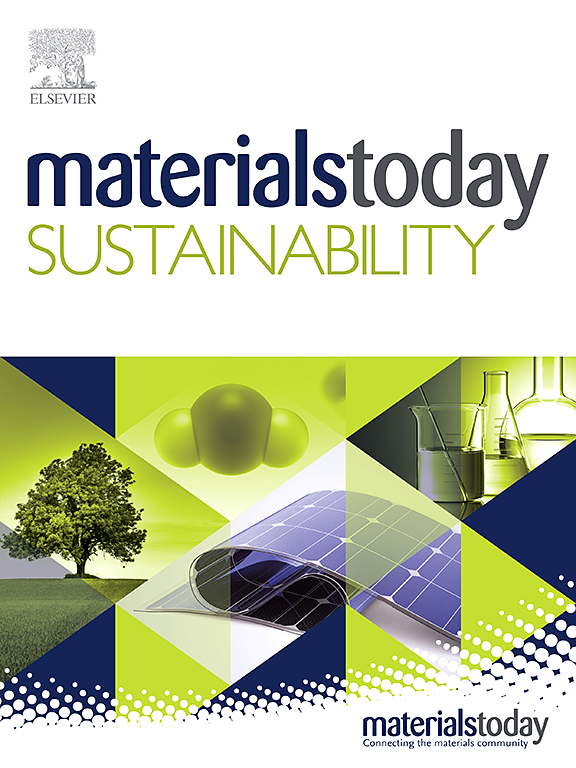Investigation of hybrid substrates of waste paper and hemp hurds for mycelium-based materials production
IF 7.1
3区 材料科学
Q1 GREEN & SUSTAINABLE SCIENCE & TECHNOLOGY
引用次数: 0
Abstract
Hemp hurds are popular for producing mycelium-based materials (MBMs), which are emerging biomaterials for the packaging industry. However, hemp hurds have been repurposed for alternative uses, resulting in potential challenges of limited availability and increased costs of substrates for manufacturing MBMs. This study aimed to reduce the reliance on hemp hurds as a substrate in the production of MBMs.Waste paper, which is more readily available and cost-effective, was blended with hemp hurds to create mycelium-based materials in this research. The fabrication duration and physical and mechanical characteristics of samples were assessed and compared to those made of pure hemp hurds substrates. The results showed that samples made of hybrid substrates exhibited longer production duration than those from 100 % hemp hurds. In addition, different fungal species have varying abilities to digest hybrid substrates, resulting in different morphology of the final product. Fomes fomentarius-based samples had a velvety and foam-like appearance, Ganoderma lucidum-based samples exhibited a more compact structure, and Trametes pubescens-based samples showed a loose structure with less mycelium skin on the surface. The study demonstrated that adding waste paper to the substrates increased the dry density of final products. Non-etheless, the dry density of the final products (0.097 g/cm3 – 0.145 g/cm3) remained competitive because it was significantly lower than that of pulp moulding packaging (0.2–1.0 g/cm3), a commonly used green packaging material nowadays. In addition, incorporating waste paper increased products’ compressive properties. Compressive strength at 35 % strain was increased by 13.9 % for Ganoderma lucidum-based samples, 25.7 % for Fomes fomentarius-based samples, and 30.8 % for Trametes pubescens-based samples.
求助全文
约1分钟内获得全文
求助全文
来源期刊

Materials Today Sustainability
Multiple-
CiteScore
5.80
自引率
6.40%
发文量
174
审稿时长
32 days
期刊介绍:
Materials Today Sustainability is a multi-disciplinary journal covering all aspects of sustainability through materials science.
With a rapidly increasing population with growing demands, materials science has emerged as a critical discipline toward protecting of the environment and ensuring the long term survival of future generations.
 求助内容:
求助内容: 应助结果提醒方式:
应助结果提醒方式:


